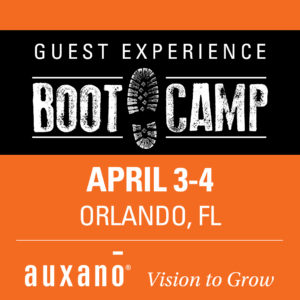Mention the name Peter Drucker in management circles, and a hushed silence will fall as your peers wait to see if you might have even a nugget of his wisdom that has not already been disseminated for consumption.
The famed Austrian died in 2005, but not before turning his vast experience and intellect toward the non-profit sector, benefiting churches around the world.
He once offered five questions for organizational strategic self-assessment. Not for “program” assessment or an individual performance review, mind you, but organizational assessment. To this day, most would argue that they really are the five most important questions you will ever ask about your organization.
And shockingly, few churches have ever asked them, much less wrestled with their answers.
Here they are:
1. What Is Our Mission?
Years ago Drucker sat down with the administrators of a major hospital to think through the mission of the emergency room. They began by saying, “Our mission is health care.”
Drucker told them that was the wrong definition.
The hospital does not take care of health; the hospital takes care of illness. Eventually they determined that their mission was: “To give assurance to the afflicted.”
The mission says why you do what you do, not the means by which you do it. It answers these questions: What is our purpose? Why do we do what we do? What, in the end, do we want to be remembered for?
So perhaps, for a church, your “why” (mission) might be: “To reach people far from God, turning them into fully-devoted followers of Jesus.” Regardless of how you word it, it will surely be some variant of the Great Commission given to us by Jesus.
2. Who Is Our Customer?
No matter what you call them – customer, student, patient, participant, volunteer, donor or member – you have someone you are trying to reach; someone you are trying to serve.
Who is it?
As Drucker puts it: “Who must be satisfied for the organization to achieve results?” His answer for the social sector, including churches, is telling: “The primary customer is the person whose life is changed through your work… Supporting customers are volunteers, members, partners, funders, referral sources, employees, and others who must be satisfied.”
In other words, the primary customer for the church is the person far from God; the supporting customer is the person already reached.
3. What Does the Customer Value?
When you ask what a customer values, you are asking what satisfies their needs, wants and aspirations. This is so complicated that it can, of course, only be answered by the customers themselves.
This may be the most important question of the five. Yet, as Drucker notes, it is the one least often asked.
A complicating factor is the reality of multiple constituencies. When I was president of a leading graduate school, I had to be mindful of a vast array of support customers: faculty, staff, trustees, donors, alumni, community residents; not to mention the primary customer – the student.
But take your eye off the ball of your primary customer, and you will negate the very reason you exist. So for a church, perhaps the most telling question is what a person far from God values when it comes to exploring God.
Very few churches know the answer.
4. What Are Our Results?
Drucker wisely notes that the results of social sector organizations are always measured outside the organization in changed lives and changed conditions.
So what does this mean for a church?
What should be appraised and judged so that resources can be concentrated for results?
In a penetrating assessment, Drucker notes that one of the most important questions for nonprofit leadership is: “Do we produce results that are sufficiently outstanding for us to justify putting our resources in this area?”
He would argue that need alone does not justify continuing. Nor does tradition. Like the New Testament parable of the talents, Drucker would challenge that the job of leadership is to invest resources where the returns are manifold, where you can have success.
This shift in thinking – from “needs” to “results” – may be among the most challenging areas for leaders to grapple.
5. What Is Our Plan?
Everything about self-assessment should lead to a plan – a plan that encompasses mission, vision, goals, objectives, action steps, a budget and appraisal.
And be careful with goals. They are critical, to be sure. “Goals flow from mission, aim the organization where it must go, build on strength, address opportunity, and taken together, outline your desired future.”
But they should be few in number. Classic Drucker: “If you have more than five goals, you have none.”
He then adds the five elements of effective plans: 1) abandonment (meaning abandoning what does not work, or in truth, has never worked); 2) concentration (strengthening what does work); 3) innovation (looking for tomorrow’s success); 4) risk taking (planning where to take the risks); and 5) analysis (marking out what you do not know, but need to know).
But through it all, one overarching question reigns supreme:
What do we want to be remembered for?
> Read more from James Emery White.
Learn more about Auxano’s Vision Clarity Process.

Tags: 5 Questions, James Emery White, Peter Drucker's 5 Questions, Vision
|
What is MyVisionRoom? > | Back to Vision >





































